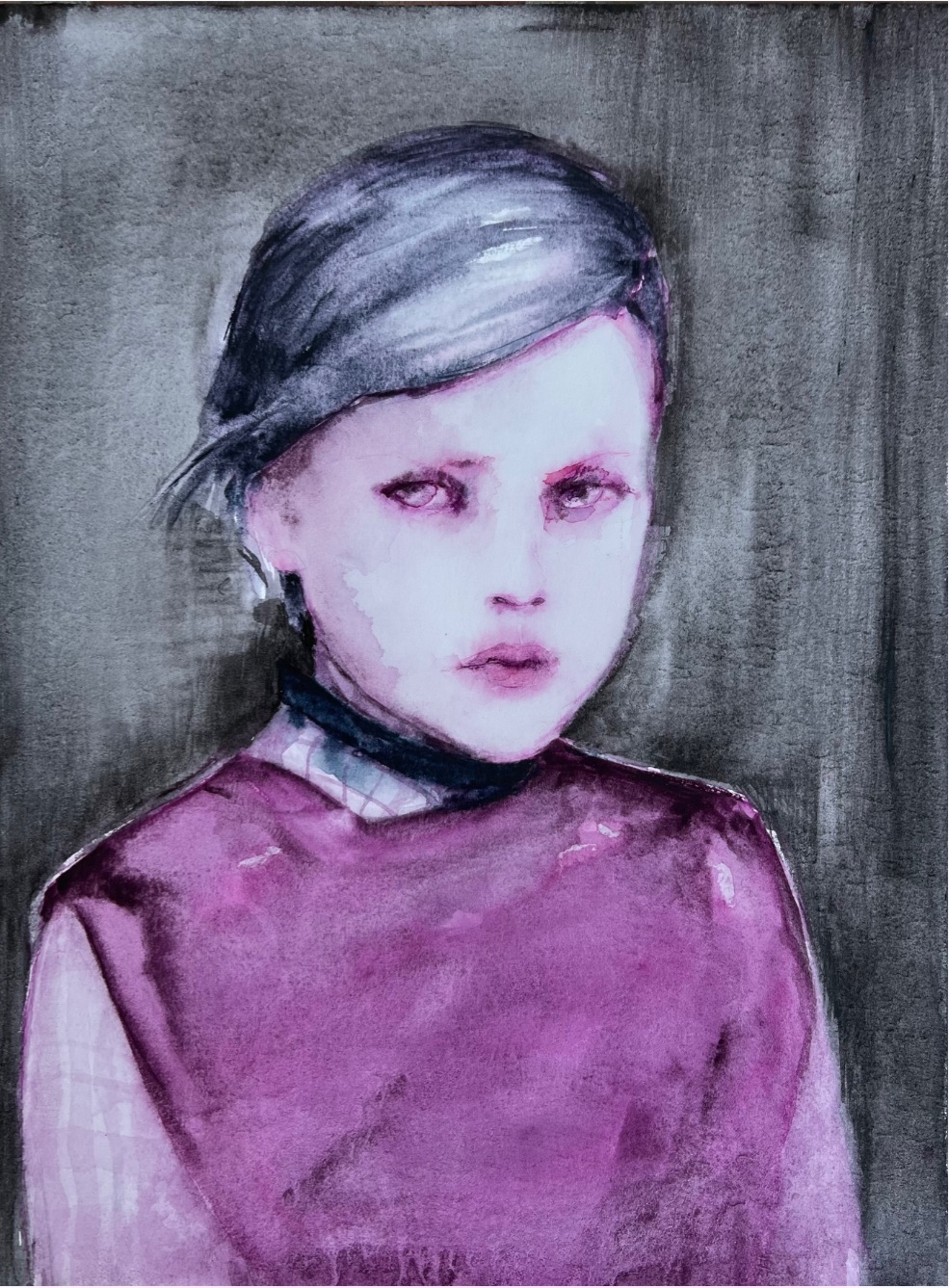The Beauty of Ambiguity: "Sylvia Batycka's Dialogues with Memory"

Sylvia Batycka's work engages with female narratives and the aesthetics of absence, grounded primarily in the field of painting.
Using a sartorial language—clothes, pattern, posture—and vernacular or archival photography as interlocutors, my practice mediates between past and present, photography and painting. The images hold on to traces, silences, and embodied memory: they insist on what is withheld and invite the viewer to dwell in the fraught intimacy between recognition and loss.
ArtDependence (AD): What role do you think art plays in connecting people today?
Sylvia Batycka (SB): Art is one of the few spaces where we can gather around uncertainty without demanding quick answers. It creates moments of recognition—sometimes direct, sometimes oblique—that allow us to see not only the artist’s vision but also our own inner landscapes. In a time when much communication is transactional, art reintroduces intimacy, empathy, and presence.
AD: How does your work reflect your view of the world right now?
SB: My work engages with female narratives and the aesthetics of absence. Historically - and often presently - women’s lives are recorded not in fullness, but through fragments, silences, and omissions. I examine those snippets aiming to create meaning and value within art. To that extent, I would carefully call it feminist work, though not in the register of protest or anger. It is closer to the voice of an archivist: resilient, attentive, and quietly insistent on what has been overlooked.
In a world still fractured by erasures, such a voice feels urgently necessary. We also live in a time saturated with images, yet most pass by in a blur—consumed quickly, forgotten almost instantly. My practice resists that cycle. It insists on slowness, on ambiguity, on the layered textures of memory that refuse to be neatly catalogued. In painting, I try to make space for what lingers—for the image that haunts rather than the one that clamours for attention.

Sylvia Batycka, The Happy Place, Oil and vintage textile on linen, 2023
AD: Can you tell us the story behind your painting "The Happy Place"?
SB: The works I chose are from my ongoing Foremothers series. It began with my collection of archival photos. This series have an intermediating power between past and present, personal and collective, photography and painting. Each painting becomes a liminal space for a viewer encounter.
With “The Happy Place” what caught me in the original image was not just the tenderness of the scene, but its strangeness—the way their faces seemed both present and absent, the doll becoming almost a mirror of the child. In painting it, I leaned into that ambiguity. To me, the image speaks of inheritance, memory, and the uncanny repetitions between generations. It’s a portrait that is not simply about likeness, but about the spaces where identity blurs—between self and other, human and object.
AD: What message or feeling do you hope viewers take away from your art?
SB: I hope my paintings leave viewers with a lingering resonance, something they cannot immediately name but feel compelled to carry with them. My work doesn’t aim to deliver clarity; it opens a space where memory, absence, and recognition coexist. If there is a message, it is that ambiguity itself can be beautiful—that the unspoken and the unseen shape us just as powerfully as what is visible.
AD: What inspired you to take part in the Art to Collect project?
SB: I was drawn to Art to Collect because it represents a moment where art is both accessible and ambitious. It’s not only about showcasing beautiful works, but about opening windows into artists’ visions, inviting collectors (emerging and established) to engage, to feel, to choose. Also, the curated collection there balances novelty and quality in a way that feels respectful of artistic risk and viewer curiosity.
Main Image: Sylvia Batycka, You should know by Now, 2025
More works on Art to Collect, click here
